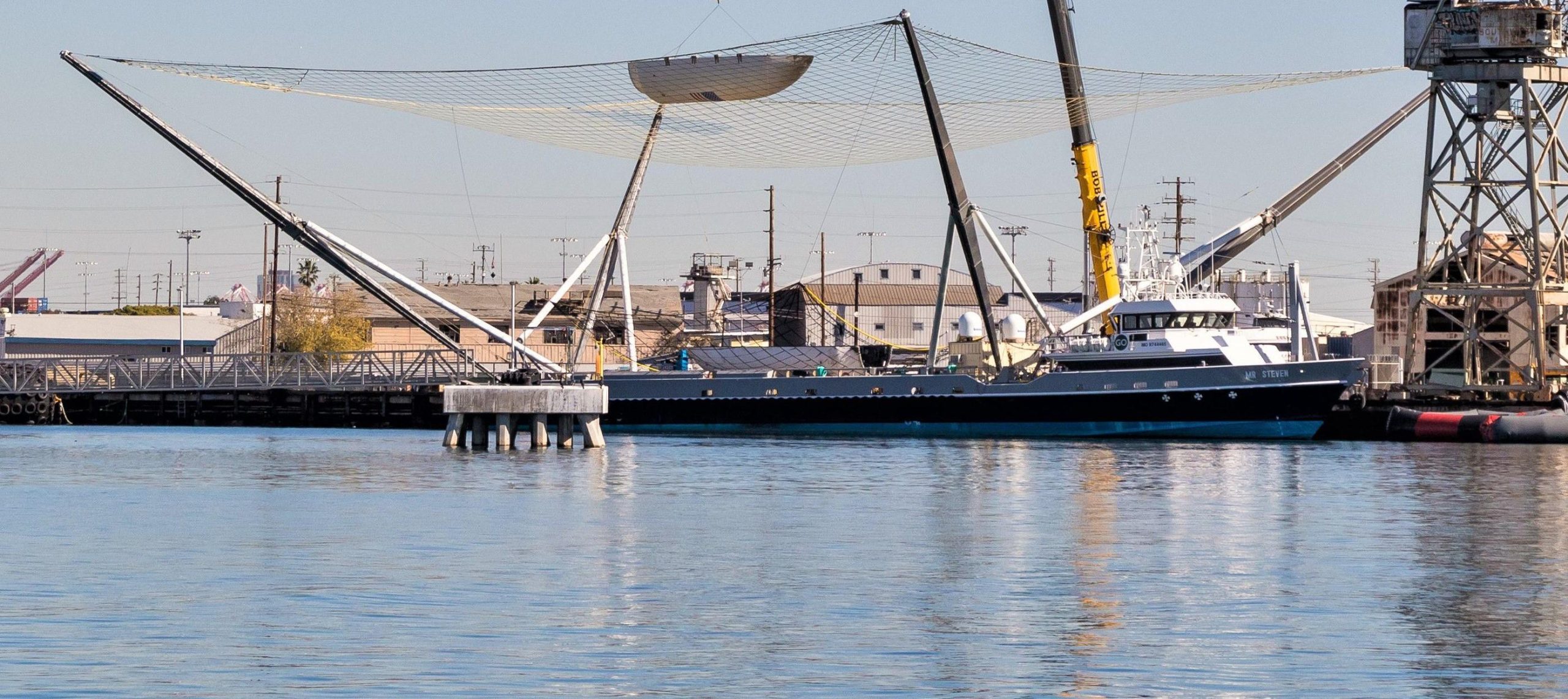
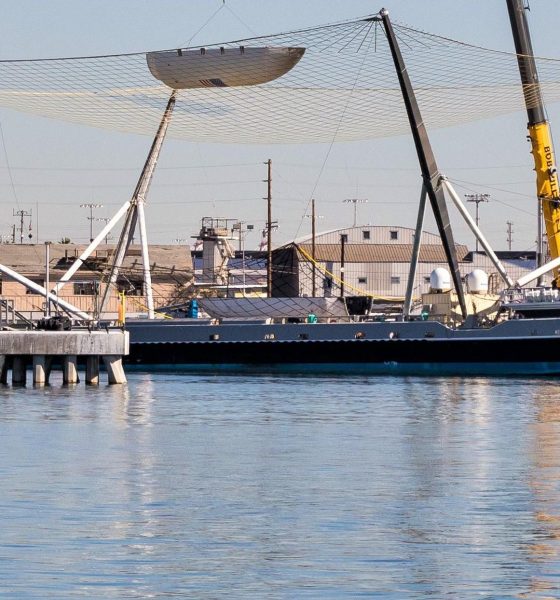
News
SpaceX isn’t giving up on catching rocket fairings, boat spotted with new net
SpaceX fairing recovery vessel Mr. Steven was spotted in Port of San Pedro on January 22nd performing tests with two fairings in its net, hinting at the challenging logistics of safely recovering both Falcon 9 fairing halves with one ship.
Although SpaceX engineers and technicians have yet to catch a parasailing Falcon 9 fairing (let alone two) after an actual operational launch, a series of controlled fairing drop tests – using a barge and a helicopter – have brought Mr. Steven agonizingly close to success, evidenced by an official video published by SpaceX earlier this month.
Two fairing halves, each in a separate net aboard Mr Steven this morning. #spacex pic.twitter.com/beYSFQwcYr
— Pauline Acalin (@w00ki33) January 23, 2019
Teslarati photographer Pauline Acalin managed to make it to Berth 240 in time to capture one section of SpaceX’s fairing recovery testing, in which Mr. Steven was loaded with two fairings, one on the large main net (the passive half) and one (the active half) atop a much smaller net slack on the vessel’s deck. By asymmetrically actuating each net’s separate electric motors, recovery technicians appear to be able to control fairing half orientation and shift their position in the net. It’s unclear how exactly Mr. Steven’s main (top) and secondary (bottom) nets are meant to interface insofar as it does not appear physically possible for a fairing half in the top net to make its way to the bottom net without the intervention of dockside cranes.
Perhaps more importantly, local photographer Jack Beyer was able to observe additional activities just prior to Pauline’s arrival, capturing what looked like a weighted parachute drop test onto either Mr. Steven’s net or the concrete docks beside the vessel.
So far they’ve placed one fairing half in the top net with another in the bottom, and done at least one drop test of a weight with a parachute. ? pic.twitter.com/MkWb9l9lqz
— Jack Beyer (@thejackbeyer) January 22, 2019
The goal of that parachute/weight drop test is entirely opaque. Regardless, Tuesday’s tests do seem to indicate that SpaceX is thinking about recovering both post-launch Falcon fairing halves with a single Mr. Steven, a capability upgrade that would make the incomplete challenge of catching fairings even more difficult. Assuming both fairing halves deploy their parafoils at roughly the same time, it might be possible for the autonomous parafoils to modify trajectories in such a way that a gap of seconds or even minutes could be created between both planned splashdowns, offering Mr. Steven a minute or two to free its net of the first captured half before gently catching the second.
Despite the fact that SpaceX has not yet had operational success in the ~12 months recovery engineers and technicians have been working with Mr. Steven, tests like those performed on Tuesday have continued to reliably occur. If anything, the fact that experiments with dual-fairing recovery operations are still on the table is an encouraging indication that fairing recovery and reuse – particularly with Mr. Steven in the loop – are still a priority at SpaceX, while also suggesting that the company’s engineers and technicians are extremely confident that repeatable success is just a matter of refinement.

This should not come as a much of a surprise given that Falcon 9 began propulsive soft landing attempts in September 2013, 27 months before the company’s first successful Falcon 9 booster recovery. Nevertheless, SpaceX attempted its first actual landing aboard a drone ship in January 2015, separating the first attempt from the first successful landing by just less than 12 months. Fairing recovery is clearly an entirely different beast but the gist of this analogy remains true regardless – SpaceX’s brilliant engineers and technicians are unlikely to give up until a given problem is solved or their efforts are redirected elsewhere as company priorities shift.
Recent fairing recovery test with Mr. Steven. So close! pic.twitter.com/DFSCfBnM0Y
— SpaceX (@SpaceX) January 8, 2019
Berth 240’s uncertain future
In the meantime, SpaceX may soon have to move Mr. Steven’s Port of San Pedro operations elsewhere according to a report from the LA Times that the company plans to “terminate [its] Terminal Island lease agreement.” SpaceX was unable to offer further insight beyond a statement provided about the future of BFR’s manufacturing, initially planned to occur at a dedicated factory that would have been built at Berth 240, which has also acted as Mr. Steven’s home for the last eight months.
Given the lack of official insight into the proceedings, it’s ambiguous if the terminated lease will be modified to allow for Mr. Steven to continue operating out of Berth 240. Prior to moving to Berth 240, SpaceX stationed Mr. Steven at Berth 52, home of drone ship Just Read The Instructions (JRTI) and support vessel NRC Quest. Space is already tight at that site, however, making it a suboptimal replacement for Berth 240.
While I feel crushed about #SpaceX pulling the #SuperHeavy out of the @PortofLA, I feel confident that other innovators will see the huge value they get in San Pedro. (1/2)
— Joe Buscaino (@JoeBuscaino) January 16, 2019
SpaceX signed its Berth 240 lease near the end of March 2018 and would have reached the first anniversary of its prospective BFR factory around two months from now. For now, only SpaceX seems to know where Mr. Steven’s operations and the first BFR (Starship/Super Heavy) production will ultimately be located.

News
Dutch regulator RDW confirms Tesla FSD February 2026 target
The regulator emphasized that safety, not public pressure, will decide whether FSD receives authorization for use in Europe.
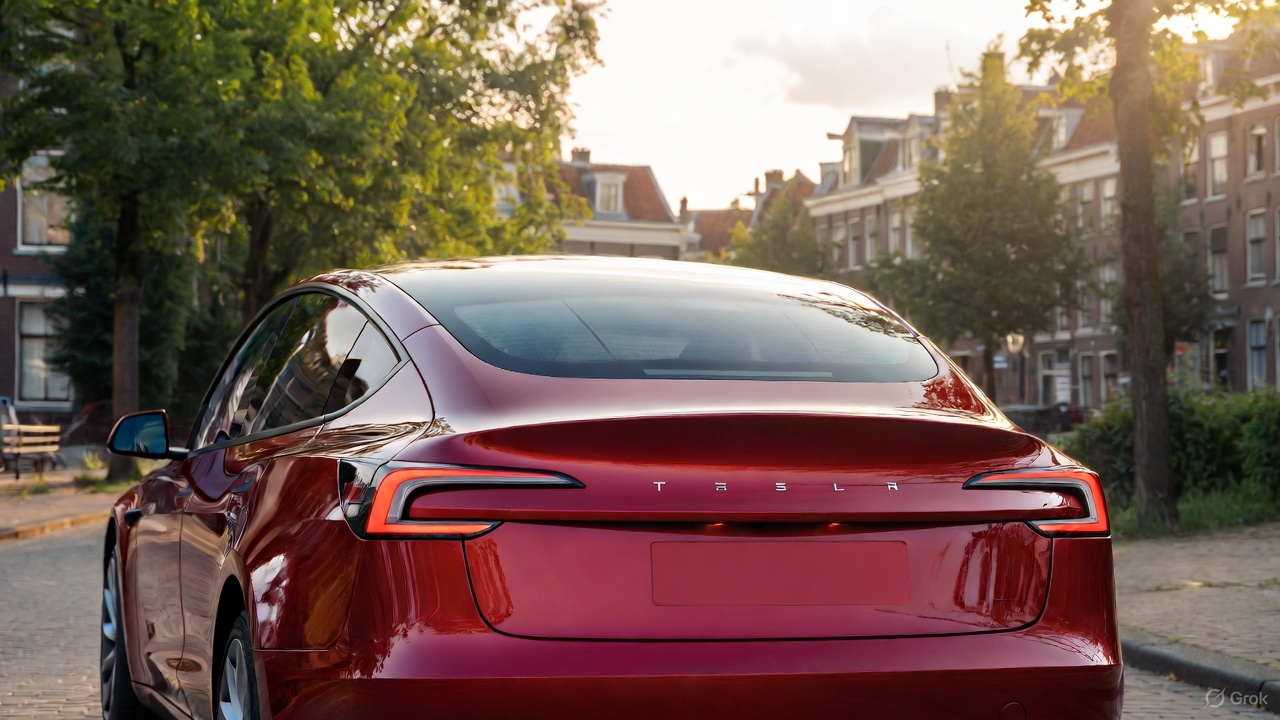
The Dutch vehicle authority RDW responded to Tesla’s recent updates about its efforts to bring Full Self-Driving (Supervised) in Europe, confirming that February 2026 remains the target month for Tesla to demonstrate regulatory compliance.
While acknowledging the tentative schedule with Tesla, the regulator emphasized that safety, not public pressure, will decide whether FSD receives authorization for use in Europe.
RDW confirms 2026 target, warns Feb 2026 timeline is not guaranteed
In its response, which was posted on its official website, the RDW clarified that it does not disclose details about ongoing manufacturer applications due to competitive sensitivity. However, the agency confirmed that both parties have agreed on a February 2026 window during which Tesla is expected to show that FSD (Supervised) can meet required safety and compliance standards. Whether Tesla can satisfy those conditions within the timeline “remains to be seen,” RDW added.
RDW also directly addressed Tesla’s social media request encouraging drivers to contact the regulator to express support. While thanking those who already reached out, RDW asked the public to stop contacting them, noting these messages burden customer-service resources and have no influence on the approval process.
“In the message on X, Tesla calls on Tesla drivers to thank the RDW and to express their enthusiasm about this planning to us by contacting us. We thank everyone who has already done so, and would like to ask everyone not to contact us about this. It takes up unnecessary time for our customer service. Moreover, this will have no influence on whether or not the planning is met,” the RDW wrote.
The RDW shares insights on EU approval requirements
The RDW further outlined how new technology enters the European market when no existing legislation directly covers it. Under EU Regulation 2018/858, a manufacturer may seek an exemption for unregulated features such as advanced driver assistance systems. The process requires a Member State, in this case the Netherlands, to submit a formal request to the European Commission on the manufacturer’s behalf.
Approval then moves to a committee vote. A majority in favor would grant EU-wide authorization, allowing the technology across all Member States. If the vote fails, the exemption is valid only within the Netherlands, and individual countries must decide whether to accept it independently.
Before any exemption request can be filed, Tesla must complete a comprehensive type-approval process with the RDW, including controlled on-road testing. Provided that FSD Supervised passes these regulatory evaluations, the exemption could be submitted for broader EU consideration.
News
Tesla says Europe could finally get FSD in 2026, and Dutch regulator RDW is key
As per Tesla, a Dutch regulatory exemption targeted for February 2026 could very well be the key gateway for a Europe-wide rollout of FSD.
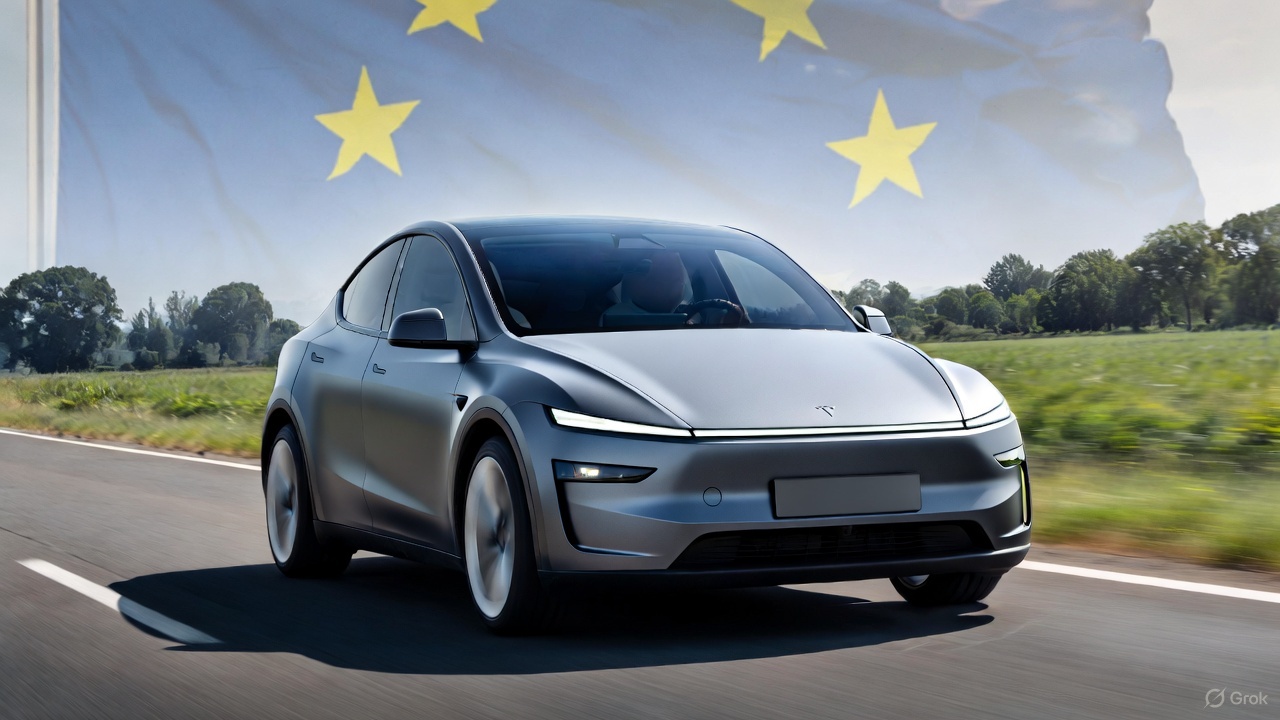
Tesla has shared its most detailed timeline yet for bringing Full Self-Driving (Supervised) to Europe. The electric vehicle maker posted its update through the official X account of Tesla Europe & Middle East.
As per Tesla, a Dutch regulatory exemption targeted for February 2026 could very well be the key gateway for a Europe-wide rollout of FSD.
Tesla pushes for EU approval
Tesla stated that it has spent more than 12 months working directly with European authorities and delivering FSD demonstrations to regulators in several EU member state. Tesla highlighted a number of its efforts for FSD’s release in Europe, such as safety documentation for FSD, which is now included in its latest public Safety Report, and over 1 million kilometers of internal testing conducted on EU roads across 17 countries.
To unlock approval, Tesla is relying on the Netherlands’ approval authority RDW. The process requires proving compliance with UN-R-171 for driver-assist systems while also filing Article 39 exemptions for behaviors that remain unregulated in Europe, such as hands-off system-initiated lane changes and Level 2 operation on roads that are not fully covered by current rules. Tesla argued that these functions cannot be retrofitted or adjusted into existing frameworks without compromising safety and performance.
“Some of these regulations are outdated and rules-based, which makes FSD illegal in its current form. Changing FSD to be compliant with these rules would make it unsafe and unusable in many cases. While we have changed FSD to be maximally compliant where it is logical and reasonable, we won’t sacrifice the safety of a proven system or materially deteriorate customer usability,” Tesla wrote in its post.
Tesla targets February 2026 approval
According to Tesla, real-world safety data alone has not been considered sufficient by EU regulators, prompting the company to gather evidence to get exemptions on a specific rule-by-rule basis. RDW has reportedly committed to issuing a Netherlands National approval in February 2026, which could pave the way for other EU countries to recognize the exemption and possibly authorize local deployment of FSD.
“Currently, RDW has committed to granting Netherlands National approval in February 2026. Please contact them via link below to express your excitement & thank them for making this happen as soon as possible. Upon NL National approval, other EU countries can immediately recognize the exemption and also allow rollout within their country. Then we will bring it to a TCMV vote for official EU-wide approval. We’re excited to bring FSD to our owners in Europe soon!” Tesla wrote in its post.
Investor's Corner
Tesla stock lands elusive ‘must own’ status from Wall Street firm
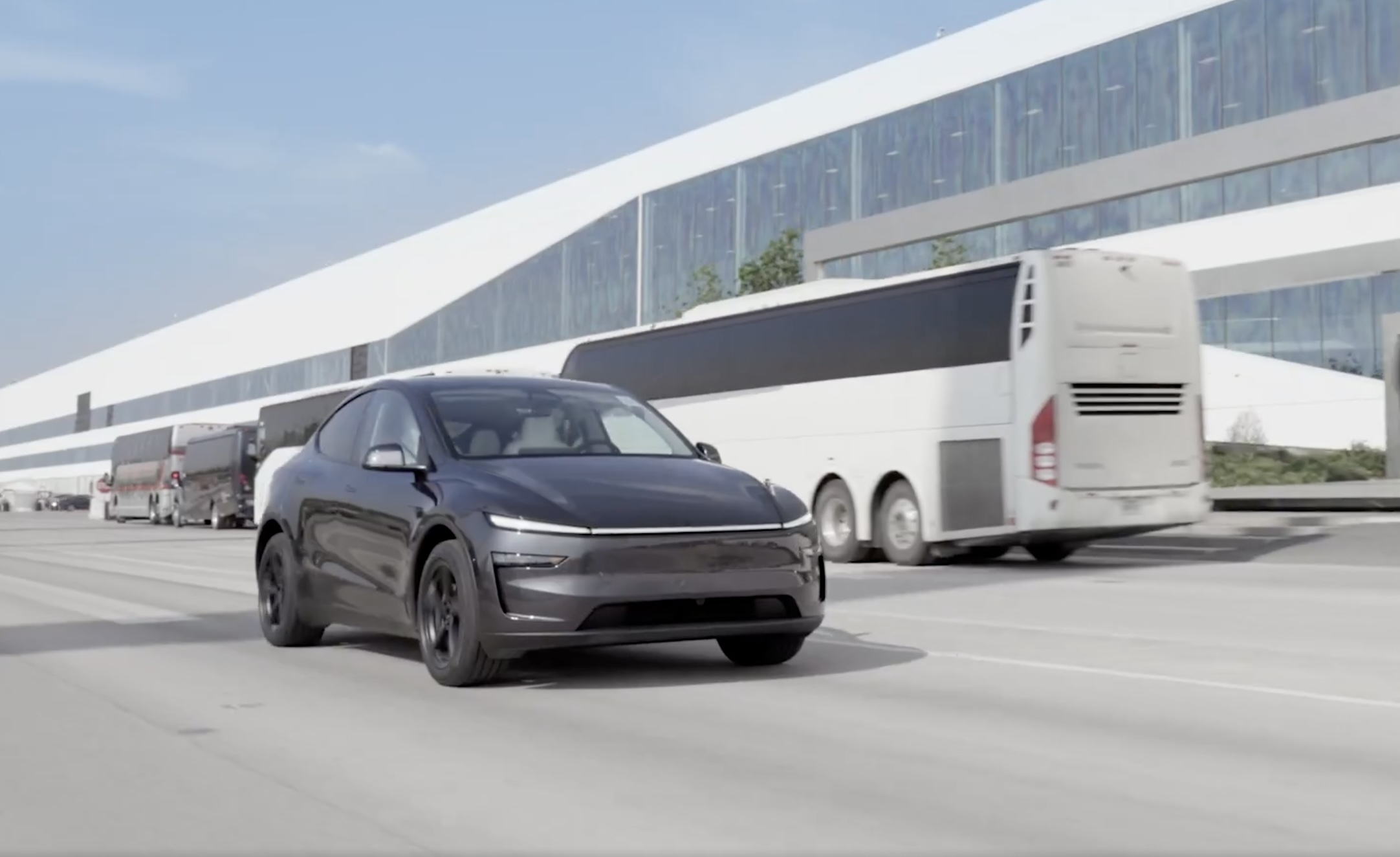
Tesla stock (NASDAQ: TSLA) has landed an elusive “must own” status from Wall Street firm Melius, according to a new note released early this week.
Analyst Rob Wertheimer said Tesla will lead the charge in world-changing tech, given the company’s focus on self-driving, autonomy, and Robotaxi. In a note to investors, Wertheimer said “the world is about to change, dramatically,” because of the advent of self-driving cars.
He looks at the industry and sees many potential players, but the firm says there will only be one true winner:
“Our point is not that Tesla is at risk, it’s that everybody else is.”
The major argument is that autonomy is nearing a tipping point where years of chipping away at the software and data needed to develop a sound, safe, and effective form of autonomous driving technology turn into an avalanche of progress.
Wertheimer believes autonomy is a $7 trillion sector,” and in the coming years, investors will see “hundreds of billions in value shift to Tesla.”
A lot of the major growth has to do with the all-too-common “butts in seats” strategy, as Wertheimer believes that only a fraction of people in the United States have ridden in a self-driving car. In Tesla’s regard, only “tens of thousands” have tried Tesla’s latest Full Self-Driving (Supervised) version, which is v14.
Tesla Full Self-Driving v14.2 – Full Review, the Good and the Bad
When it reaches a widespread rollout and more people are able to experience Tesla Full Self-Driving v14, he believes “it will shock most people.”
Citing things like Tesla’s massive data pool from its vehicles, as well as its shift to end-to-end neural nets in 2021 and 2022, as well as the upcoming AI5 chip, which will be put into a handful of vehicles next year, but will reach a wider rollout in 2027, Melius believes many investors are not aware of the pace of advancement in self-driving.
Tesla’s lead in its self-driving efforts is expanding, Wertheimer says. The company is making strategic choices on everything from hardware to software, manufacturing, and overall vehicle design. He says Tesla has left legacy automakers struggling to keep pace as they still rely on outdated architectures and fragmented supplier systems.
Tesla shares are up over 6 percent at 10:40 a.m. on the East Coast, trading at around $416.








